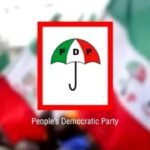By Umar Yakubu
Incompetence may be harmful, but misplaced objectivity is lethal – Sandeep Sahajpal
Since they know we are a disengaged public and are assured that there are no consequences for poor or ill-timed decisions that negatively affect the commoner, they have come again! They just informed us, without consultations, that they are borrowing another $ 800 million as a palliative to cushion the effects of fuel subsidy removal. Because they have little value for citizen engagement in a democracy, especially on fiscal matters that border around national debt, they are just informing us on the pages of newspapers or after those preposterous contract-awarding sessions called FEC meetings.
Before addressing the need for the debt, let’s analyze our debt issues under democratic regimes within an eight-year bracket from 1999. President Obasanjo met our external debt at $ 29 billion. By 2007, it was down to $15 billion. Between President Yarádua and Jonathan, they ballooned it to $ 32 billion by 2015. By the end of 2022, President Buhari shot our total public debt to $103 billion, which comprises Federal, State, FCT, and domestic components. So, Obasanjo decreased it by $ 14 billion, Yarádua increased it by $17 billion, and Buhari boomeranged it by $ 73 billion! Reuters projects that at the current rate, it will rise to $172 billion this year after a loan swap and new borrowing to fund the 2023 budget.
Neo-liberal economists will haste to argue that there is nothing wrong with debt and use illogical arguments of debt to GDP ratio as if GDP can pay debt. What use is the GDP size if your revenues are inefficient in servicing the economy through robust economic output – and service the debt? Debt-to-GDP is an excuse by some officials who support the borrowing jamboree, and we have now reached the level where by December 2022, our debt service-to-revenue ratio was at 80.6 percent — a figure far above World Bank’s suggested 22.5 percent for low-income countries like Nigeria. The International Monetary Fund (IMF) has said Nigeria may spend almost 100 percent of its revenue on debt servicing by 2026. But we still go there to borrow. And really, what is there to show for all we have borrowed so far? Just last week,the Ministry of Aviation bought 12 firefighter trucks for N 1 billion each.
Away from the debt since they always get the approval of the National Assembly to mortgage our future. The $800 million is because they want to remove “price modulation” since that’s the voodoo term they formulated around 2016 to deceive Nigerians that they were not paying subsidies on PMS.
Discussing their inability to solve the criminal activities around the oil industry is pointless. But it’s necessary for context because most of the splurge for borrowing is hinged on low revenue generation. So the facts are: they can’t solve the oil theft problem, can’t fully liberalize NNPC, can’t prosecute oil thieves, nor monitor distribution to reduce smuggling. Evidently, they can’t fix four refineries nor create the enabling environment for new ones to be built by investors. They sold them in 2007 and reversed it a few years later. To date, they are paying salaries for refineries that have not worked for two decades. They borrowed a billion dollars to fix them last year after several turn-around maintenance that gulps millions of dollars. So their only option is to remove the subsidy to finance budget deficits, 65% of which is recurrent expenditure. To affirm impudence, they sometimes tell us that NNPC is remitting nothing! This is the same NNPC that is supposed to be a player in the industry but still operates with regulatory and supervisory functions.
To ease the pain of the removal, they will distribute $ 800 million to 50 million Nigerians. What criteria were used to select 50 million out of the 133 million that are multidimensionally poor? That leaves you with a balance of 83 million. What happens to them ? Which database are they using to distribute the funds? If they diligently distribute every dime of the $800 million at the exchange rate of N750 to the dollar, each recipient will receive $16/N12,000 ! With the current Consumer Price Index by the National Bureau of Statistics on food inflation at 24,32 %, what relief does N12,000 bring and for how long ? Also, when you pump in that amount, especially within a short period, the purchasing power of the N12,ooo will drop because of inflation -and wipe out at least 20% of that N12,000. That brings the amount to about N9600 to alleviate the poverty of one who lives on less than $ 2 per day!
They first misinformed us it was a grant until BusinessDay newspaper and BudgIT established that it’s a loan that will be paid between 2027 and 2051. For whatever it’s worth, they should please desist from taking that loan. But they won’t heed such advice since there will be vested interest through consultants and other avaricious public officers.
They should therefore lend the funds to Dangote to speed up the completion of the refinery. If they are too jealous to do that, they could give each local government $ 1 million to insist it is invested in education, healthcare or agriculture. In the long run, the returns on investment will be more than N9600 per person.

 Join Daily Trust WhatsApp Community For Quick Access To News and Happenings Around You.
Join Daily Trust WhatsApp Community For Quick Access To News and Happenings Around You.


